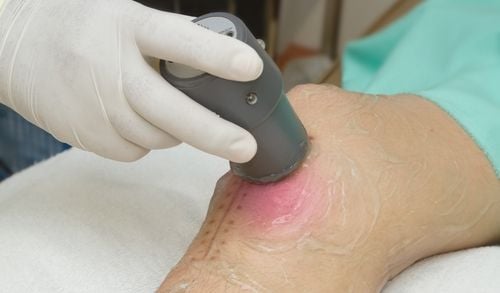Ultrasound therapy uses high-frequency sound waves far beyond those that are distinguishable to human hearing. These high-frequency sound waves can be used to help in the treatment and healing of wounds and injuries. Ultrasound therapy can reduce inflammation, improve healing and relieve pain in cases of soft tissue damage such as that of muscles, tendons, fascia, bursas (joint cushions).
Uses of Ultrasound Therapy
The dosage of intensity and frequency for ultrasound therapy varies depending on each case, but it’s mainly used as part of a physical therapy program especially in the following cases:
- Contracture of muscle, tendon and fascia; which is the abnormal shortening and loss of elasticity, such as with plantar fasciitis
- In cases of chronic lower back pain, when there is no apparent physical cause
- Coccydynia, which is pain in the tailbone area of unknown origin
- In cases of sports injuries and muscle strains, sprain or spasm
- Inflammatory diseases of the joints, tendons and bone, such as osteoarthritis, rheumatoid arthritis tendonitis or bursitis; as it increases the blood flow and collagen formation (the main protein component of soft tissue)
- Increasing the extensibility of mature collagen, as that of the already formed fibrous tissue in scars and previously injured tissue
The Ultrasound Therapy Procedure
Ultrasound therapy itself is a simple and quick procedure that lasts from a few minutes to less than an hour. It can be performed once or more per day depending on the purpose of therapy. During the procedure, the affected area is massaged with an ultrasound probe that has been covered with a conducting gel to increase the efficiency of the procedure.
Ultrasound therapy works by two mechanisms: thermal and mechanical. The thermal mechanism of ultrasound therapy uses a more continuous pattern of sound waves to penetrate deep into the tissue, causing microscopic vibrations. This raises the temperature of the treated area, making the tissue warmer, and increasing the blood flow and metabolic rate of that tissue. Mechanical ultrasound therapy uses sound wave pulses that penetrate more deeply, causing the small bubbles in the soft tissue to expand and contract; which reduces the swelling and inflammation of the tissue, thus reducing the pain.
Advantages of Ultrasound Therapy
Ultrasound therapy is an inexpensive, simple and non-invasive procedure. It does not require an operation and it will not leave a scar or expose a patient to radiation. It is easy to apply in a clinic setting or at home. Ultrasound therapy can be performed by a trained professional or by the patient, with appropriate instruction and training. Ultrasound therapy has been shown to be very effective in resolving inflammation and reducing pain, while promoting more rapid healing.
Precautions
As safe and easy as ultrasound therapy is, it can cause severe damage when applied to the wrong tissue or used inappropriately. Therefore, the following guidelines and contraindications should be noted:
- It is contraindicated to the eyes and eye area, genital area (especially in males), abdominal area, the site of recent spinal surgery or exposed neural tissue, because of the damage it may cause to these sensitive areas.
- Ultrasound therapy should be avoided in cases of acute infections, cancers and malignancies, as it can help spread the infection or tumor.
- It is contraindicated in cases of thromboembolic disease because of the risk of dislodging a blood clot.
- Patients with pacemakers should avoid ultrasound therapy as it can interfere with the performance of the device. Ultrasound should generally be avoided by patients who have metal implants, as the increased heat of the metal can cause burning damage to the surrounding tissue.
Recovery
Recovery with ultrasound therapy depends greatly on the professional providing the treatment, because application of the correct intensity and frequency is crucial. Ultrasound therapy is typically part of a more comprehensive treatment plan of physical therapy that also includes proper massage and exercise. These therapies can be crucial to healing and recovery.


